Automate: Connect Voilà to other apps
Automate tasks by connecting Voilà to external apps, custom APIs, and no-code automation platforms like Zapier or Make.com.
Last updated: Jan 24, 2025

TL;DR Automate tasks, trigger actions, create workflows and integrate with external services with Webhooks.
Voilà lets you automate tasks, trigger actions, and integrate with external services through simple Webhooks. Simply create a Custom Action with a Webhook URL, and Voilà will send the necessary information to the external service and process the response.
You can connect Voilà to existing, no-code automation platforms, such as Zapier, Make.com, or your own Custom API endpoints.
Simple Example: Google Calendar
Let's take a look at a simple example of how to use a webhook to connect Voilà to Google Calendar. In this example, we will connect Voilà to Google Calendar through a no-code workflow automation platform, Make.com.
Step 1 - Create a Scenario in Make.com
First, create a new scenario in Make.com and add a Webhook module. Copy the webhook URL provided by Make.com and paste it into the "Webhook URL" field in Voilà, when creating a new Custom Action.
-
Step 2 - Create a Custom Action in Voilà
Define a JSON object that includes the necessary attributes for creating an event in Google Calendar. Provide it to the AI in the "Custom Instructions" field of Your Custom Action together with simple playbook for the AI to follow:
<goal>- Help me schedule an even in my Google Calendar
- Once I provide the necessary information, present the event details for my approval
- Once approved, send all the details as JSON object (provided below) and execute the remote action.
- Summarize the response and any relevant information in a human-readable format
<json>{ "title": "Meeting with John", "description": "Discuss project details (optional)", "location": "Coffee Shop (optional)", "start": "2024-09-05T09:00:00", "end": "2024-09-05T10:00:00", "all_day": false }</json> -
Step 3 - Execute the Custom Action
Save your custom action and execute it for the first time so that the webhook endpoint understands the incoming JSON format.
-
Step 4 - Connect Google Calendar
Add a Google Calendar module to your Make.com scenario and configure it to create an event based on the incoming JSON object.
-
Step 5 - Save
Save and enable your Make.com scenario.
-
That's it!
Now, whenever you run your custom action in Voilà, it will create an event in your Google Calendar.
More Complex Example: Social Media Management
Let’s take a more complex scenario where you want to draft a social media post for three channels (X, LinkedIn, and Instagram), create an accompanying image, and schedule the post for publication using Buffer.
The best way to instruct the AI is to provide a detailed step-by-step definition of the task using plain language. Include this information in the "Custom Instructions" field. You can think of this as a "playbook" for the AI to follow when executing more complex actions.
- You are an expert social media manager who helps users create engaging posts for social media.
- You goal is to help me create engaging social media post for X, LinkedIn and Instagram.
- You will help me draft the text of the post and once the text is approved, also an optional image.
- Once everything is approved, you will help me schedule the post to my social media channels using Buffer.
<instructions>
- Create an engaging social media post that works well across all platforms (X/Twitter, LinkedIn, Instagram)
- The post has an attention-grabbing hook to draw readers in
- It conveys the main message or story in a concise yet impactful way
- It uses a casual, friendly and conversational tone that resonates with the target audience
- It includes a call-to-action, question or statement to encourage engagement
<playbook>
- Once I approve the text of the social media post, ask me whether I need help creating an image for the post
- Once we have all the content (Text of the post, optional image), ask for my confirmation to post this to my social media channels through Buffer
- When I approve the content, generate a JSON object for the Webhook and execute it
- Present any relevant information from the response in human-readable format as a short summary.
- IMPORTANT: Ask for my approval, before execution of the Webhook
<json>


